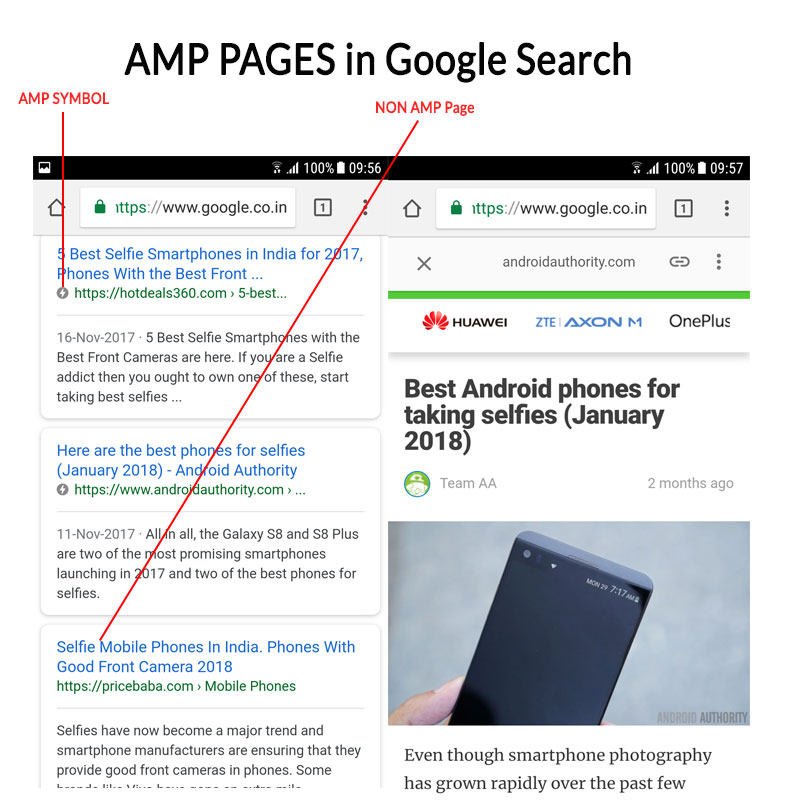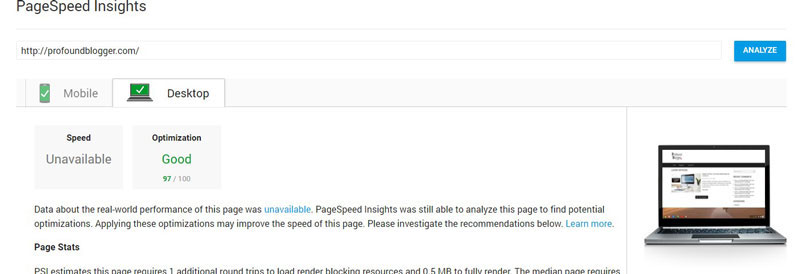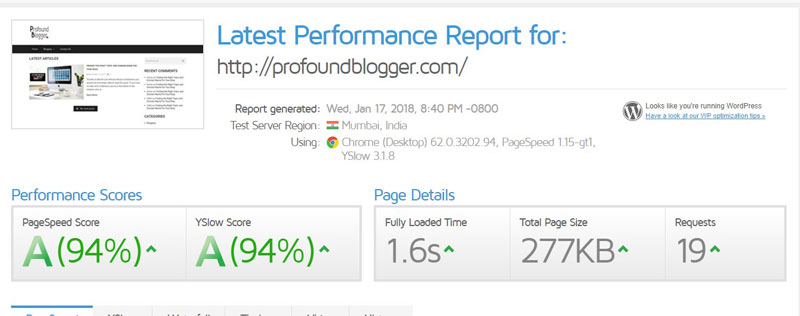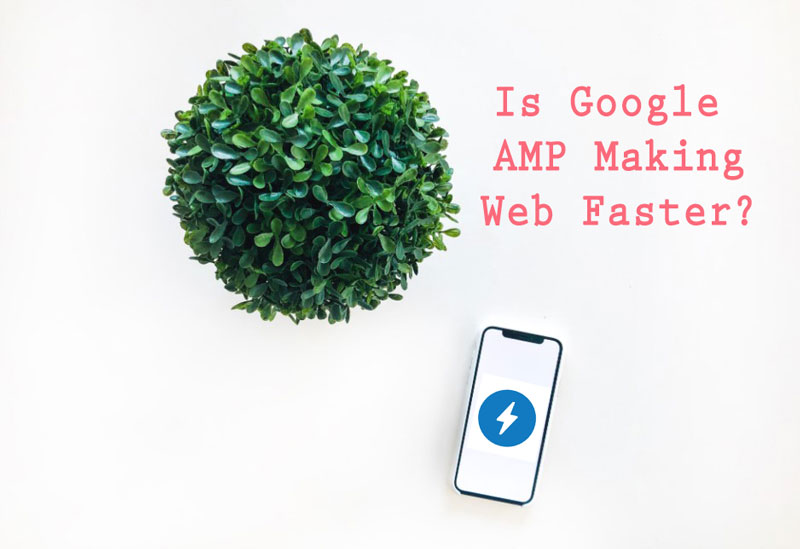Google AMP is a new technology that can help load web pages much faster on mobile.
If you have not come across the AMP pages below are the screenshots, to help you understand what an AMP website is. On the left are the results from Google search on a mobile device that shows AMP pages with a bolt symbol. On the right, we can see an AMP website.

Why Are Publishers switching to AMP?
Google is vehemently pushing for the AMP implementation. This is undeniably making website owners and publishers adopt this new technology whether they want it or not.
Moreover, the Tech mogul wants a faster web, especially on mobile, so that’s a Good thing, Right? I will answer that, but let’s first know some more details about AMP.
The publishers may or may not want to switch to AMP, but there is fear in the community. The fear of losing the search ranking traffic, if they don’t adopt the new Tech.
Why Switch to AMP Platform?
Aforementioned, it loads faster compared to the standard mobile version of your website. A faster mobile website is especially useful to help people on a slow internet connection 2G or 3G to access your site without any hassles.
AMP as a Ranking Signal
There is ambiguity if the Google AMP is a direct ranking signal, but there are stronger hints it can be.
Google recently in a blog post shared that they’re rolling out a new algorithm change that will rank websites based on the mobile version. Importantly, on 17th Jan, Google has said from July 2018 the mobile page load time is a direct ranking signal.
Nobody knows how this change will impact publishers and how much will be the benefit of implementing AMP.
Should You Make Your Site Load Fast?
Hell, Yes. You should make your site fast not for Google or anyone else, but for your readers. I am obsessed to have a faster website for years. Right from theme selection to plugins, everything is optimized.
We use a lot of technologies like Nginx, FastCGI Cache, Super cache and CDN to make the site blazing fast.
But at the same time, I am a lot more concerned with minor details like fonts, time on site of visitors, their reading experience, and user engagement. You may have to fine-tune your AMP site to reduce the bounce rate and user engagement.
Also, here are some of the Results for Profound Blogger Load times:



These are pretty impressive load times for any website. I am all for a faster web with least bloat and unintrusive ads.
Issues in Switching to AMP?
Technical issues –
People coming from Google search on Android for mobile will be able to visit this version.
Other mobile browsers use your standard mobile website. So, AMP is only for Google search visitors and that too on mobile Chrome browser.
If you are a small publisher, who doesn’t have a technical background you may find the implementation daunting.
Besides, you are already managing two versions of the site, the mobile version, and desktop, here is the third one.
Not to mention, the faulty implementation of AMP can create duplicate content or other similar technical issues.
Design and Engagement Issues
Moreover, you will need to optimize ads on the AMP version, manage bounce rate and pages per session too. I have not seen post-implementation any major changes to these parameters but it can be different from site to site.
You may have worked hard on the mobile design of your site but for AMP you may need to put in some more effort.
Also, there can be some issues related to AMP that may reflect in your Google webmaster console after you implement it or when you do a structured data testing.
Even if you manage to do all that correctly, your AMP site may not look similar to your desktop or mobile site. You may want a consistent experience for the readers and this is slightly difficult to achieve.
You may have to spend some money on development or buy an AMP theme that can help you with the customization and experience.
Is Google AMP Making Web Faster or Ruining It?

Let’s come back to the original question. Is the Google AMP a good thing or a bad thing for small publishers?
The real issue is several Bloggers who are not so tech savvy, probably have the best content, but are not able to deal with all these changes. They are at a disadvantage.
On the other hand, for large publishers with deep pockets and dedicated resources, it is not a big deal.
But for a small blogger already burdened with running a blog, dealing with technical issues, writing content daily, editing it, maintaining the site, hosting etc. It can be overwhelming.
All said, AMP is a feature that makes the web faster and Google is strongly promoting it. Obviously, it has its merits and demerits. However, I will advise you to go ahead and try and experiment with it.
Some people may not like it, but the choice we have is limited, and it is beneficial for you to use this feature.
Furthermore, Facebook introduced the Instant articles, even that helps websites load faster. But keep your readers locked on Facebook platform. It helps Facebook make more money and people stay on its platform rather than experience your uniquely designed websites.
But this a topic for discussion on some other day. Thanks for visiting, hope the article helped you make up your mind whether you should or shouldn’t use the Google AMP.
Also, Read My Previous Post on How to Find the Right Nich and Domain Name.

